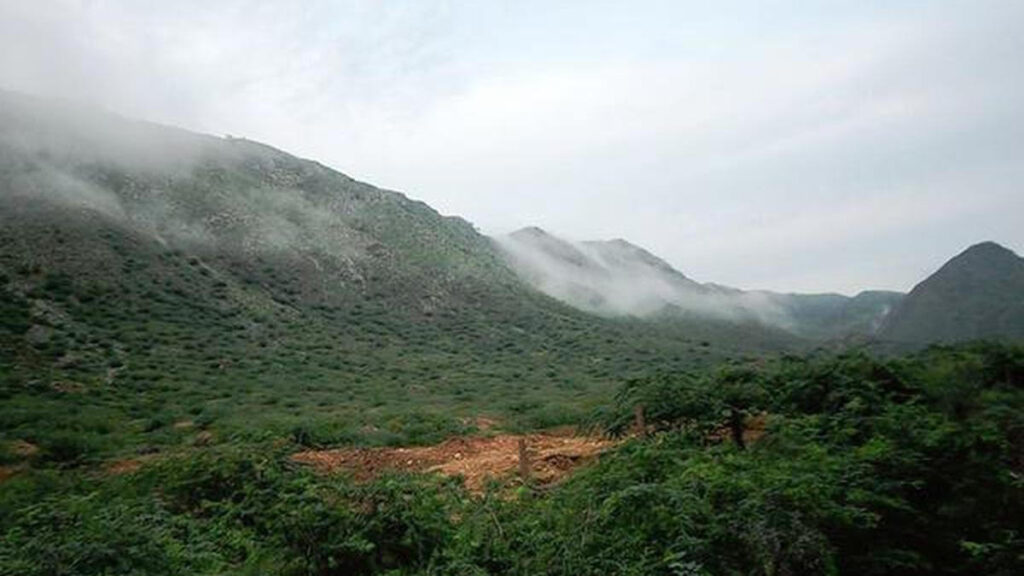Supreme Court Orders Halt to Illegal Mining in Aravallis, Questions State Action

Supreme Court Orders Halt to Illegal Mining in Aravallis, Questions State Action
The bench of Justices B.R Gavai and Abhay S. Oka highlighted the significance of striking a delicate balance between sustainable development and environmental conservation while addressing the pressing issue of illegal mining in the region.
4 May 2024
In a recent development which came to light, the Supreme Court has issued a stern directive to the Centre and state governments, emphasising the imperative need to halt illegal mining activities in the ecologically sensitive Aravalli area with mountain ranges and valleys. The bench of Justices B.R Gavai and Abhay S. Oka highlighted the significance of striking a delicate balance between sustainable development and environmental conservation while addressing the pressing issue of illegal mining in the region.
A Call for Action
The apex court unequivocally declared, “Illegal mining in the Aravallis has to stop. The authorities have to ensure that the requisite steps are taken in this regard. Otherwise, what is the benefit of having only skeletal structures in the name of mountains? A balance has to be made between sustainable development and protection of the environment.”
The point argued was that the role of governmental authorities in ensuring the cessation of unauthorised mining operations is extremely pivotal. They also emphasised the necessity of holding erring officials accountable for their actions — those who let these activities persist under veils.
The court’s reproach resonates with the overarching principle of preserving the natural integrity of the Aravalli range. Justice Gavai emphasised the importance of curbing such activities, highlighting the detrimental impact on the environment, and questioning the efficacy of mountain structures which are devoid of their ecological significance due to such human interventions.
Historical Context and Legal Precedent
The Aravalli hills have long been recognized as a vital ecological asset, serving as a natural barrier and safeguarding against adverse climatic conditions. Recognising their ecological significance, the Supreme Court had previously imposed a blanket ban on both major and minor mining of minerals in the Aravalli hills back in 2009. Despite these regulatory measures, the issue of illegal mining has persisted, posing a grave threat to the environmental equilibrium of the region.
Challenges and Controversies
One of the contentious issues surrounding illegal mining in the Aravalli range pertains to the classification of land for mining activities. The definitive line between the Aravalli hills and the Aravalli range has sparked debates, with implications for mining regulations. A Forest Survey of India (FSI) report in 2018 revealed alarming findings, indicating the disappearance of 31 hillocks due to rampant illegal mining.
Advocate K Parmeshwar, acting as amicus curiae, apprised the court of the continued exploitation recently, citing the flawed categorisation by the Rajasthan government, which narrowly defined the Aravallis, excluding major chunks of the area, thereby allowing mining below 100 metres and blurring the lines. Such revelations prompt the urgent need for decisive action to curb further environmental degradation.
Judicial Intervention and Proceedings
The Supreme Court’s intervention comes in response to petitions and representations highlighting the adverse impacts of illegal mining on the fragile ecosystem of the Aravalli range. The court has mandated the Rajasthan government to furnish details of the steps taken to address the menace of illegal mining within a stipulated time frame. Additionally, the bench has ordered the need for a comprehensive assessment of the environmental impact across the entire Aravalli range, spanning multiple states.
Environmental Imperatives and Sustainable Development
At the heart of the judicial discourse lies the imperative to reconcile competing interests – economic development and environmental preservation. The court’s emphasis on striking a balance between sustainable development and environmental protection reflects a nuanced approach to addressing complex socio-environmental challenges. By championing environmental stewardship, the judiciary reaffirms its commitment to upholding constitutional principles enshrined in the directive principles of state policy (DPSP), which every state is also required to uphold.
The sanctity of environmental protection laws should be maintained, as failure to heed these directives could exacerbate environmental degradation and jeopardise the delicate balance between development and conservation. The matter remains under judicial scrutiny, with further hearings scheduled to address the ongoing environmental concerns.
The bench has scheduled a hearing for the matter on 9th May 2024.
The bench, expressing concern over the arbitrary delineation of mining zones, talked about the interconnectedness of the Aravalli range and the adverse consequences of unchecked mining activities. The court deemed the Aravalli range as a climate barrier, shielding the region from arid conditions. The Supreme Court’s directive to halt illegal mining in the Aravalli range challenges the ones to be held accountable, to witness the underlying gravity of the environmental crisis on its way and the need for concerted action. It serves as an alarm bell for governmental agencies to enforce existing regulations rigorously and adopt proactive measures to safeguard the ecological integrity of the region.
As custodians of law and order, the judiciary plays a paramount role in shaping policies and practices that uphold the sanctity of nature for future generations. All stakeholders must collaborate synergistically to mitigate the adverse impacts of illegal mining and pave the way for sustainable development rooted in environmental consciousness.









